Citibank 2012 Annual Report Download - page 28
Download and view the complete annual report
Please find page 28 of the 2012 Citibank annual report below. You can navigate through the pages in the report by either clicking on the pages listed below, or by using the keyword search tool below to find specific information within the annual report.-
 1
1 -
 2
2 -
 3
3 -
 4
4 -
 5
5 -
 6
6 -
 7
7 -
 8
8 -
 9
9 -
 10
10 -
 11
11 -
 12
12 -
 13
13 -
 14
14 -
 15
15 -
 16
16 -
 17
17 -
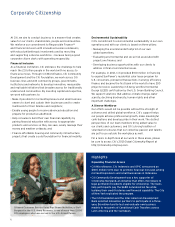 18
18 -
 19
19 -
 20
20 -
 21
21 -
 22
22 -
 23
23 -
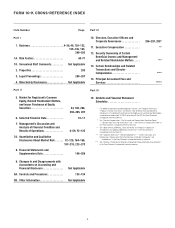 24
24 -
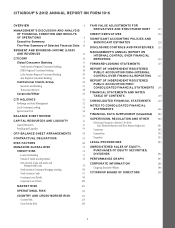 25
25 -
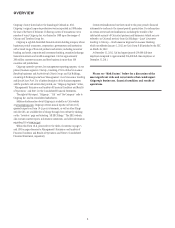 26
26 -
 27
27 -
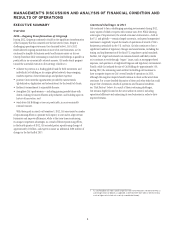 28
28 -
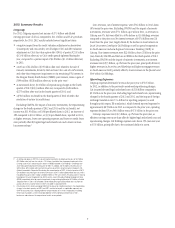 29
29 -
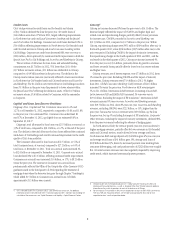 30
30 -
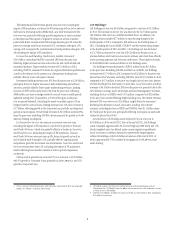 31
31 -
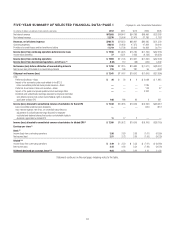 32
32 -
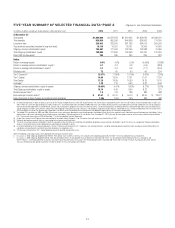 33
33 -
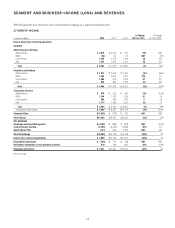 34
34 -
 35
35 -
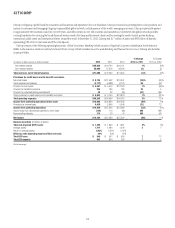 36
36 -
 37
37 -
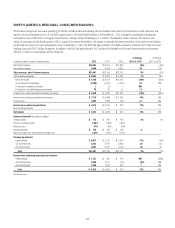 38
38 -
 39
39 -
 40
40 -
 41
41 -
 42
42 -
 43
43 -
 44
44 -
 45
45 -
 46
46 -
 47
47 -
 48
48 -
 49
49 -
 50
50 -
 51
51 -
 52
52 -
 53
53 -
 54
54 -
 55
55 -
 56
56 -
 57
57 -
 58
58 -
 59
59 -
 60
60 -
 61
61 -
 62
62 -
 63
63 -
 64
64 -
 65
65 -
 66
66 -
 67
67 -
 68
68 -
 69
69 -
 70
70 -
 71
71 -
 72
72 -
 73
73 -
 74
74 -
 75
75 -
 76
76 -
 77
77 -
 78
78 -
 79
79 -
 80
80 -
 81
81 -
 82
82 -
 83
83 -
 84
84 -
 85
85 -
 86
86 -
 87
87 -
 88
88 -
 89
89 -
 90
90 -
 91
91 -
 92
92 -
 93
93 -
 94
94 -
 95
95 -
 96
96 -
 97
97 -
 98
98 -
 99
99 -
 100
100 -
 101
101 -
 102
102 -
 103
103 -
 104
104 -
 105
105 -
 106
106 -
 107
107 -
 108
108 -
 109
109 -
 110
110 -
 111
111 -
 112
112 -
 113
113 -
 114
114 -
 115
115 -
 116
116 -
 117
117 -
 118
118 -
 119
119 -
 120
120 -
 121
121 -
 122
122 -
 123
123 -
 124
124 -
 125
125 -
 126
126 -
 127
127 -
 128
128 -
 129
129 -
 130
130 -
 131
131 -
 132
132 -
 133
133 -
 134
134 -
 135
135 -
 136
136 -
 137
137 -
 138
138 -
 139
139 -
 140
140 -
 141
141 -
 142
142 -
 143
143 -
 144
144 -
 145
145 -
 146
146 -
 147
147 -
 148
148 -
 149
149 -
 150
150 -
 151
151 -
 152
152 -
 153
153 -
 154
154 -
 155
155 -
 156
156 -
 157
157 -
 158
158 -
 159
159 -
 160
160 -
 161
161 -
 162
162 -
 163
163 -
 164
164 -
 165
165 -
 166
166 -
 167
167 -
 168
168 -
 169
169 -
 170
170 -
 171
171 -
 172
172 -
 173
173 -
 174
174 -
 175
175 -
 176
176 -
 177
177 -
 178
178 -
 179
179 -
 180
180 -
 181
181 -
 182
182 -
 183
183 -
 184
184 -
 185
185 -
 186
186 -
 187
187 -
 188
188 -
 189
189 -
 190
190 -
 191
191 -
 192
192 -
 193
193 -
 194
194 -
 195
195 -
 196
196 -
 197
197 -
 198
198 -
 199
199 -
 200
200 -
 201
201 -
 202
202 -
 203
203 -
 204
204 -
 205
205 -
 206
206 -
 207
207 -
 208
208 -
 209
209 -
 210
210 -
 211
211 -
 212
212 -
 213
213 -
 214
214 -
 215
215 -
 216
216 -
 217
217 -
 218
218 -
 219
219 -
 220
220 -
 221
221 -
 222
222 -
 223
223 -
 224
224 -
 225
225 -
 226
226 -
 227
227 -
 228
228 -
 229
229 -
 230
230 -
 231
231 -
 232
232 -
 233
233 -
 234
234 -
 235
235 -
 236
236 -
 237
237 -
 238
238 -
 239
239 -
 240
240 -
 241
241 -
 242
242 -
 243
243 -
 244
244 -
 245
245 -
 246
246 -
 247
247 -
 248
248 -
 249
249 -
 250
250 -
 251
251 -
 252
252 -
 253
253 -
 254
254 -
 255
255 -
 256
256 -
 257
257 -
 258
258 -
 259
259 -
 260
260 -
 261
261 -
 262
262 -
 263
263 -
 264
264 -
 265
265 -
 266
266 -
 267
267 -
 268
268 -
 269
269 -
 270
270 -
 271
271 -
 272
272 -
 273
273 -
 274
274 -
 275
275 -
 276
276 -
 277
277 -
 278
278 -
 279
279 -
 280
280 -
 281
281 -
 282
282 -
 283
283 -
 284
284 -
 285
285 -
 286
286 -
 287
287 -
 288
288 -
 289
289 -
 290
290 -
 291
291 -
 292
292 -
 293
293 -
 294
294 -
 295
295 -
 296
296 -
 297
297 -
 298
298 -
 299
299 -
 300
300 -
 301
301 -
 302
302 -
 303
303 -
 304
304 -
 305
305 -
 306
306 -
 307
307 -
 308
308 -
 309
309 -
 310
310 -
 311
311 -
 312
312 -
 313
313 -
 314
314 -
 315
315 -
 316
316 -
 317
317 -
 318
318 -
 319
319 -
 320
320 -
 321
321 -
 322
322 -
 323
323 -
 324
324
 |
 |

6
EXECUTIVE SUMMARY
Overview
2012—Ongoing Transformation of Citigroup
During 2012, Citigroup continued to build on the significant transformation
of the Company that has occurred over the last several years. Despite a
challenging operating environment (as discussed below), Citi’s 2012
results showed ongoing momentum in most of its core businesses, as Citi
continued to simplify its business model and focus resources on its core
Citicorp franchise while continuing to wind down Citi Holdings as quickly as
practicable in an economically rational manner. Citi made steady progress
toward the successful execution of its strategy, which is to:
• enhance its position as a leading global bank for both institutions and
individuals, by building on its unique global network, deep emerging
markets expertise, client relationships and product expertise;
• position Citi to seize the opportunities provided by current trends
(globalization, digitization and urbanization) for the benefit of clients;
• further its commitment to responsible finance;
• strengthen Citi’s performance—including gaining market share with
clients, making Citi more efficient and productive, and building upon its
history of innovation; and
• wind down Citi Holdings as soon as practicable, in an economically
rational manner.
With these goals in mind, on December 5, 2012, Citi announced a number
of repositioning efforts to optimize its footprint, re-size and re-align certain
businesses and improve efficiencies, while at the same time maintaining
its unique competitive advantages. As a result of these repositioning efforts,
in the fourth quarter of 2012, Citi recorded pretax repositioning charges of
approximately $1 billion, and expects to incur an additional $100 million of
charges in the first half of 2013.
Continued Challenges in 2013
Citi continued to face a challenging operating environment during 2012,
many aspects of which it expects will continue into 2013. While showing
some signs of improvement, the overall economic environment—both in
the U.S. and globally—remains largely uncertain, and spread compression1
continues to negatively impact the results of operations of several of Citi’s
businesses, particularly in the U.S. and Asia. Citi also continues to face a
significant number of regulatory changes and uncertainties, including the
timing and implementation of the final U.S. regulatory capital standards.
Further, Citi’s legal and related costs remain elevated and likely volatile
as it continues to work through “legacy” issues, such as mortgage-related
expenses, and operates in a heightened litigious and regulatory environment.
Finally, while Citi reduced the size of Citi Holdings by approximately 31%
during 2012, the remaining assets within Citi Holdings will continue to
have a negative impact on Citi’s overall results of operations in 2013,
although this negative impact should continue to abate as the wind-down
continues. For a more detailed discussion of these and other risks that could
impact Citi’s businesses, results of operations and financial condition,
see “Risk Factors” below. As a result of these continuing challenges,
Citi remains highly focused on the areas within its control, including
operational efficiency and optimizing its core businesses in order to drive
improved returns.
1 As used throughout this report, spread compression refers to the reduction in net interest revenue as
a percentage of loans or deposits, as applicable, as driven by either lower yields on interest-earning
assets or higher costs to fund such assets (or a combination thereof).
MANAGEMENT’S DISCUSSION AND ANALYSIS OF FINANCIAL CONDITION AND
RESULTS OF OPERATIONS
